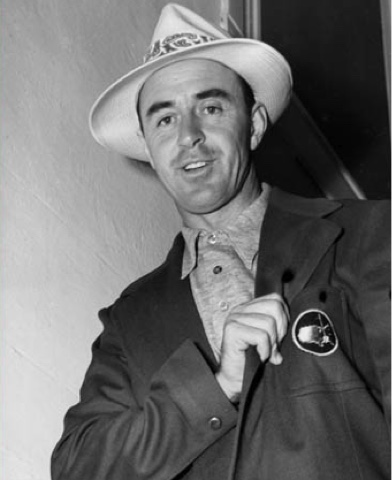Sam shot 68, Burke 70, Little 71, and Goodman 73. Only three holes were won that day, with Sam winning two and Goodman the other. They had won the match 3and 2. So how did this backwoods kid deal with the pressure of his first big match? Sam wrote:
"Bending over, (to hit his first tee shot) I had to take both hands to tee up my ball. The ball looked all blurred as I stood over it. My nerves were hopping right out of my skin.
And then I stepped away and did something I'd been practicing. I just let my mind take a rest by not thinking of anything in particular. If I thought of anything, it wasn't the crowd or the match, but sort of a mixture of all the good drives I'd ever made. Some people call it concentration, but to me it's more the trick of not thinking at all, of letting the world go by. It's sort of like pleasant daydreaming about a wonderful place you've been or something happy you've done, but with no details dragged in. In that frame of mind, the ball isn't anything fearful; it's just a thing you're going to hit well."
Sam went on to further explain this at the conclusion of the first chapter under the heading, THE MOST VALUABLE LESSON I LEARNED. He wrote:
"Earlier in this chapter, I told of 'going into a sort of pleasant daydream' when I had the tee jitters against Burke, Little and Goodman. There is a real payoff idea behind this.
The practice swing of most ordinary players almost always carries most of the main ingredients. The fundamentals are there. But when they are in a match, the difference is terrific. The feet are no longer easily set. There is a cramped body turn. Hands and wrists are rigid. When this happened to me, I began thinking in terms of performance, not results. By this I mean I had no thought beyond the ball--of traps, ponds, rough, or out of bounds. All I did was go back to my good practice swing, on which I could count, and then to think with my swing--not ahead of the swing. This takes will power, but it isn't so hard to let your mind relax and say to yourself, 'Here goes my practice swing--and I don't care where the ball lights or lands. If I can't play like a good golfer in actual play, at least I can go back to my practice swing and let nature take its course.'
Call on your will power to 'let the rest of the world go by,' and dust that thing with the form you have when nobody is watching--and watch your score go down. Climb inside your old, regular personality, not the one that wants to take you over when the pressure is on."
Most of us wish we could hit the ball with our practice swing, that relaxed swing we take when we are just clipping the top of a daisie. Sam Snead tells us not to wish we could use our practice swing when the pressure is on; he tells us to use our will power and just do it. He thought that this was the most valuable lesson he ever learned.
Wouldn't it be nice to just stand up to the ball and be yourself--just stand up there and hit it without giving a hoot where it lands. We can if we use a little will power.

No comments:
Post a Comment